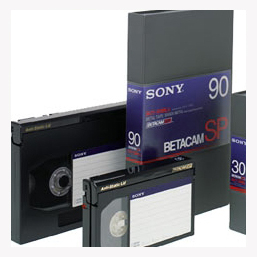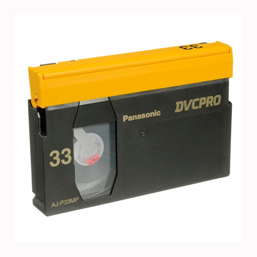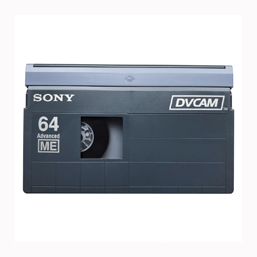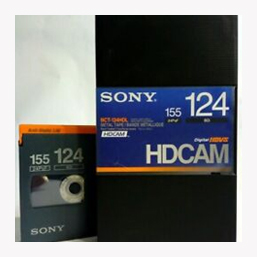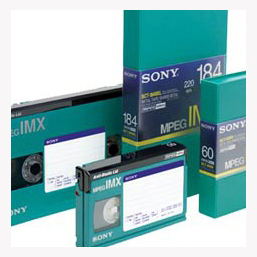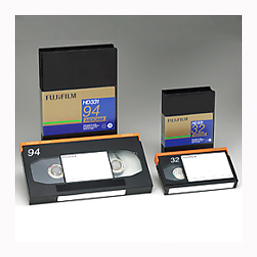Video File Format Guide
motion & cine film | audio | video | optical | photographic film | books | documents | Scan on Demand | FAQs
Our multi-award winning company adhere to the preservation of digital records using The National Archives Standards and The International Association of Sound and Audiovisual Archives TC-06 guidelines.
Understanding Video File Formats, Codecs and Containers

National Archive Standard | Preserving Magnetic Media into Digital Files
Output Formats: Uncompressed 10-bit AVI | FFV1 Uncompressed | ProRes 422 HQ HD | ProRes 422 | Avid DNxHD | AVI | MOV | H264 | DPX | WAV, WAVE, BWF, AIFF, MP3 or CD | Upto 24-bit 192 kHz
What is a video format? Video formats refer to the way in which the video’s information is stored on digital devices or servers. There are two main components to each video format; the Codec and the Container. Codecs Codec is actually an acronym; it stands for compressor/decompressor. Think about all of the information contained in a video file – there are combinations of data related to images, audio, video, and meta data among others. The amount of data held in a video file takes up a lot of space and the codec helps to reduce the amount of storage required to house each file.
While in storage, the video codec will reduce the file size by merging like data, minimising the number of colours in a video and reducing the resolution. When the video is opened for viewing or editing the same codec will decompress the data. It is important to explain that Codecs can be “lossy” or “lossless” in their compression methods. If the codec’s method of compression involves removing or merging files, this is what would be described as lossy. It can result in the quality of your file diminishing after each edit.
Lossless Codecs will store your data in a way that preserves all of the information from the original file, which is great, but there is a tradeoff for that benefit – a larger file size.
Containers is used to keep all the elements of a file together so that they can be played back synchonously. All video containers can hold data related to audio and video but they can differ from one another in their abilities to hold elements outside of those. Some video containers can hold metadata and subtitles among other things, but some can only hold audio and video elements. Video containers can be identified by their file extension. Some common video file extensions are .mp4, .mov, and .avi, among others.
Formats vs. Codecs, What’s The Difference? Containers and Codecs, are very different from one another and serve two important and unique purposes. The Codec encodes and compresses, then decodes and decompresses the data that makes up your video. An example of a Codec is H.264 The Format or Container, stores the audio, video, subtitles, and other elements that make up your video. MP4 and MOV are examples of video formats.
The Most Common Video Formats There are many different types of video file formats.
MP4 is the most popular video format. It is universally compatible and capable of storing audio, video, subtitles, text and still images. It is the best option for use on Facebook, Instagram, Youtube and Twitter. This file format is universally supported by most digital devices and media players. It is compatible with both Windows and iOs and can be used on popular devices like Xbox 360, television sets and DVD players. MP4 files are relatively small in size but the video quality is high. Compression of these files only causes a very slight loss of quality.
MOV file format is similar to the MP4 format but was developed by Apple for use with Quicktime Player. It is the best video format for use on Apple devices. This video format holds audio, text, and video effects and is highly regarded in the film industry because of the ability to be separated into multiple tracks. MOV files are very high quality and easy to edit. They are playable on Apple devices as well as programs in Windows and most usb-compatible televisions. MOV files are the professional standard in video editing. The tradeoff for the high quality is a very large file size. The compression of this video file format causes some data loss which reduces the video quality.
AVI video file format was Microsoft’s answer to the MOV. Developed in 1995, it is the one of the oldest video file formats in existence. It is an ideal format for short videos and television but is less suited to streaming and sharing because of the large file size. AVI files are compatible with most major operating systems and web browsers in addition to being adaptable and versatile in terms of working with other video file formats as well. This video file format creates excellent audio and video quality and is even suitable for DVD recording.
WMV is AVI’s successor, WMV files are supported across Windows devices and on Apple as well, as long as Windows Media Player has been downloaded. The WMW is one of the only video file types that beats the MP4 in terms of compression capability. WMV video files have a licensing and copyright function that makes them ideal for the sale of digital video products. They also have 1080p video support and a file size so small that it can serve many different purposes – even holding the capability to be played via Google Drive.
MKV video file format is becoming increasingly popular. It uses open-source code and holds multiple Codecs simultaneously. This video file type supports the inclusion of audio, video, subtitles, metadata and menus. Multiple Codecs can be supported within this one file type, and there is no loss of data during compression. These video files result in an excellent quality end product. The tradeoff for the excellent quality is a large file size, so this video file format requires more storage than some others.
AVCHD file type was co-created by Sony and Panasonic and was designed for use with Camcorders. It is the highest quality video format for those shooting high end video footage. The H.264/MPEG-4 compression technology used by this video file format results in very small file sizes without a loss in data quality. The AVCHD can store audio, video, subtitles, menu navigation, and even a slideshow! Its newest format also supports 3D video.
WEBM open source video file type, was developed by Google for HTML5. It plays directly in the browser, without the need for Flash Player or another plugin. Because it plays in the browser itself, this video format takes less time to load than others. It is supported by the major browsers, like Chrome, Edge, Firefox and Opera. The WEBM video file type easly compresses and decompresses data, resulting in high quality video playback with a very small file size. Videos using this file type can also be embedded directly into the background of a website. This video file format’s requirement for HTML to enable playback means that its compatibility with mobile devices is quite weak.
How to Choose a Video File Format? The video file format you choose should be based heavily on the video quality requirements for your specific project. Some other things to consider include the length of your video, how you want to share it and how you plan to edit your work.
For online videos When creating a video for online playback, make sure you choose a file format that will be supported by most web browsers. This way, your video will be played natively on the browser. MP4 and WEBM are the best choices for videos that need to be web compatible.
For home video recordings If you are making home videos, chances are pretty good that you want them to stand the test of time. Because of that, it’s best to choose a format with high video quality and a good chance of being usable in the future. Open-source file formats would be the best bet for this, as they are more future-proof than formats that are owned by or specific to one platform. MP4 or AVI formats are good choices for this.
For Windows applications Of course if your video needs to be compatible with a Windows application you need to choose a format that is compatible with Windows. If this is your goal, WMV is a good choice for your project.
Best video formats for Youtube While many video formats can be used effectively with Youtube, it’s important to consider details like time required to upload, process and play the video – this is tightly tied to the file size associated with your video. To maximize effectiveness, Youtube itself recommends the MP4 video file format with AAC-LC audio Codec and H.264 video Codec.
Best video formats for Instagram There are two formats that are accepted by Instagram, MP4 and MOV, however, due to the smaller file size and lower data loss during compression the MP4 file format is preferable. The MP4 format should be paired with an H.264 Codec for optimal results on this platform.
Best video formats for Facebook While many video file formats will work for Facebook, MP4 and MOV are the most highly recommended, with MP4 coming out on top once again due to its smaller file size and fewer losses during compression.




Supporting collections and archives of valuable magnetic tape recordings, our studio is based just outside the beautiful City of Oxford, and with an impressive client base, we are one of the leading experts in digital conversions within the UK.












